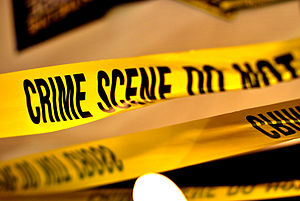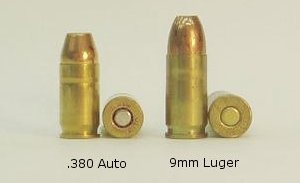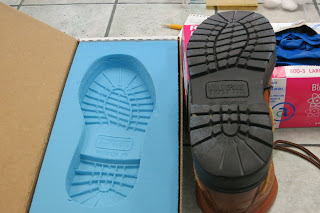| (Photo credit: Wikipedia |
(Crime Scene 101 for writers article)
They've photographed and collected all of the macro-evidence.
Now they need the trace evidence (that which isn't easily seen with the naked eye) collected and processed. This trace evidence might include hair.
* Hair is one of the most collected forms of trace evidence.
* Hair is particularly useful because it is stable over time.
* Because hair is produced around blood vessels it is a long term
record of toxins
` Illicit drugs such as THC in marijuana
` Poisonings such as arsonic
` Heavy metal exposure such as lead.
` Medications
* Hair grows at a fairly predictable rate of about .5 inches per
month. So scientists can even calculate when the exposure to
the toxin began - depending on the length of the hair.
Investigators will use three basic means of collecting hair and other trace evidence.
1. Hunt and peck2. Tape
3. Vacuum
Video Quick Study (9:50) Prt 1
Video Quick Study (1:54) Prt 2 Teacher explaining collection
methods of finding trace evidence including hair.
Humans have various hair all over their bodies including body hair, eyelashes, and eyebrows. But only head hair and pubic hair have forensic use.
So let's say we have a rape victim. They find hair on her clothes.
1. They will have to collect hair from the victim - this is a known or
K sample
2. The laboratory will compare the victim K sample to the
Q sample - the sample in question.
a. First, they will figure out if the Q sample is a human hair.
b. Second, They will determine if the K and Q samples have
the same general characteristics.
Let's say that the victim K sample excludes the Q sample that is they could not come from the same person. But our investigators have their eye on a bad-guy. They ask him for hair samples. He can
a. Agree and submit to testing
b. Refuse - if he refuses then the courts can order him to submit.
The suspect K sample is collected.
1. It is suggested by the FBI that 100 full, intact strands, including
the follicle are harvested from the suspects head from various
regions as even hair from an individual person can differ
from region to region on their heads.
2. It is suggested that at least 20 intact strands of pubic hair are
obtained.
*If the laboratory says that the suspect K sample and the Q sample
do not share similar qualities, this excludes the suspect.
*If the lab says that there are similarities in the K and Q samples,
this DOES NOT mean that you found your villain.
* Hair is class evidence - it can be used to exclude but not to prove
someone is culpable.
* If there are similarities, the sample is sent for DNA testing.
(DNA 101)
* By doing lab analysis first, it saves a great deal of time and money
over going right to DNA analysis
Let's do a little biology 101 - I know you're excited!
| (Photo credit: Wikipedia) |
* The root of the hair is
anchored into the dermis of
the skin
* Follicles are surrounded by
epidermal cells
* Blood vessels at the roots
deliver nutrients
* Hair is mostly made
from keratin
* The outside of the hair is
called the cuticle.
* In humans, the cuticle
gives very little information.
* Mammals have various
patterns in their cuticles and
the labs can compare the
various patterns to tell
that's a bat, or a rabbit, or a
werewolf.
* Inside of the cuticle is the cortex.
* The cortex is the thickest layer of the hair strand.
* This is where pigment from the melanin can be found, giving hair
its color.
` Hair colorant can coat the surface or penetrate to the cortex.
epidermal cells
* Blood vessels at the roots
deliver nutrients
Looking at the hair itself
* Hair is mostly madefrom keratin
| (Photo credit: Wikipedia) |
called the cuticle.
* In humans, the cuticle
gives very little information.
* Mammals have various
patterns in their cuticles and
the labs can compare the
various patterns to tell
that's a bat, or a rabbit, or a
werewolf.
* Inside of the cuticle is the cortex.
* The cortex is the thickest layer of the hair strand.
* This is where pigment from the melanin can be found, giving hair
its color.
` Hair colorant can coat the surface or penetrate to the cortex.
`In bleached hair pigmentation is lost from the cortex
`Only the hair that is treated will show a change in color, so at the
root the true color will be visible. There will be a line of
demarcation between the two
* When people change the color of their hair, or their hair changes
naturally as the subject ages, this can create issues in finding
similarities in the K and Q samples.
* PLOT TWIST!
A fingerprint cannot be altered, but your villain can thwart an
investigator by dying their hair, committing a crime,
and then dying their hair a different color. So even if the police
take K samples from their hairbrush they will not show as similar
in the lab. And when they take them from hair that's been altered
it too will not show as the same.
The Medulla
`Only the hair that is treated will show a change in color, so at the
root the true color will be visible. There will be a line of
demarcation between the two
* When people change the color of their hair, or their hair changes
naturally as the subject ages, this can create issues in finding
similarities in the K and Q samples.
* PLOT TWIST!
A fingerprint cannot be altered, but your villain can thwart an
investigator by dying their hair, committing a crime,
and then dying their hair a different color. So even if the police
take K samples from their hairbrush they will not show as similar
in the lab. And when they take them from hair that's been altered
it too will not show as the same.
| Pubic Hair Medulla (Photo credit: Wikipedia) |
* The medulla is at the core of the hair sample
* It is the hollow region at the center.
* A data bases of medulla patterns have been developed to
identify various animals and differentiate human from other
animal hair.
* Finding animal hair can be very helpful. It can link transferred
hair from a suspect at a crime scene. For example, Blade Slayer
goes in and attacks your heroine. Trace evidence hair is found.
It's a black rabbit, and Blade Slayer happens to have a black
rabbit named Cuddles. It's circumstantial, but it can be helpful.
* Animal hair forensics can also be used in crimes like poaching
and illegal animal importation (Wildlife Forensics Blog Post)
* Hair that's been cut or shaved will have a blunt end
* Hair that is allowed to grow naturally such as arm hair will have a
naturally tapered end
* Head hair - not recently cut- will show a frayed or split end
* Age cannot be discerned.
* Sex cannot be determined.
* Ethnicity - is difficult. The person would have to have a very
clean background as Caucasian, African, or Asian ancestry.
And then, there are variables that can point the investigators
in a direction. It is not conclusive.
* Finding animal hair can be very helpful. It can link transferred
hair from a suspect at a crime scene. For example, Blade Slayer
goes in and attacks your heroine. Trace evidence hair is found.
It's a black rabbit, and Blade Slayer happens to have a black
rabbit named Cuddles. It's circumstantial, but it can be helpful.
* Animal hair forensics can also be used in crimes like poaching
and illegal animal importation (Wildlife Forensics Blog Post)
Three Phases of Hair Growth
Anagen Phase -
* 2-7 yrs for scalp hair
* Growth phase where cells are formed at the root which pushes the
hair out of the scalp making the hair longer.
* This hair will only fall out if it is yanked out.
* When hair from this phase is
found at the crime scene it has a
follicle attached.
* The follicle contains DNA that
will identify an individual
Catagen Phase-
* The hair is in transition
* The hair no longer grows, the
cuticle pulls away
Telegen Phase -
* The final phase where hair falls
out.
* In the catagen and telegen
phases the follicle is no longer
attached to the hair. Nuclear
DNA cannot be found. The
investigators will try to test for
mitochondrial DNA in the hair
shaft. Mitochondrial DNA is not
conclusive as everyone in the
matriarchal line will have the
same DNA (DNA 101 for Writers)
* Telogen hairs are those typically found at crime scenes.
* Because hair is easily transferred from one place to another, it is
circumstantial evidence.
* 2-7 yrs for scalp hair
* Growth phase where cells are formed at the root which pushes the
hair out of the scalp making the hair longer.
* This hair will only fall out if it is yanked out.
* When hair from this phase is
| Animation of the structure of a section of DNA. The bases lie horizontally between the two spiraling strands. (Photo credit: Wikipedia) |
follicle attached.
* The follicle contains DNA that
will identify an individual
Catagen Phase-
* The hair is in transition
* The hair no longer grows, the
cuticle pulls away
Telegen Phase -
* The final phase where hair falls
out.
* In the catagen and telegen
phases the follicle is no longer
attached to the hair. Nuclear
DNA cannot be found. The
investigators will try to test for
mitochondrial DNA in the hair
shaft. Mitochondrial DNA is not
conclusive as everyone in the
matriarchal line will have the
same DNA (DNA 101 for Writers)
* Telogen hairs are those typically found at crime scenes.
* Because hair is easily transferred from one place to another, it is
circumstantial evidence.
What else can an investigator tell from a hair strand?
* Pubic hairs have shaft differences along the length and a
continuous medulla
* Male facial hair is usually more triangular in shape* Hair that's been cut or shaved will have a blunt end
* Hair that is allowed to grow naturally such as arm hair will have a
naturally tapered end
* Head hair - not recently cut- will show a frayed or split end
* Age cannot be discerned.
* Sex cannot be determined.
* Ethnicity - is difficult. The person would have to have a very
clean background as Caucasian, African, or Asian ancestry.
And then, there are variables that can point the investigators
in a direction. It is not conclusive.
So what can an investigator say about a hair sample?
* Is it human, or animal (or vampire)?
* Is it a useful sample, either head or pubic hair?
* Is it head or is it pubic hair?
* Is the Q sample consistent with the K sample?
`If yes, further investigation - suspect stays in the pool.
`If no, suspect is removed from possibilities; they look for another
suspect.
`If yes AND no that is there are similarities AND differences,
then no conclusion can be drawn.
Video Quick Study (4:16) Hair testimony at Casey Anthony trial



















 \
\






